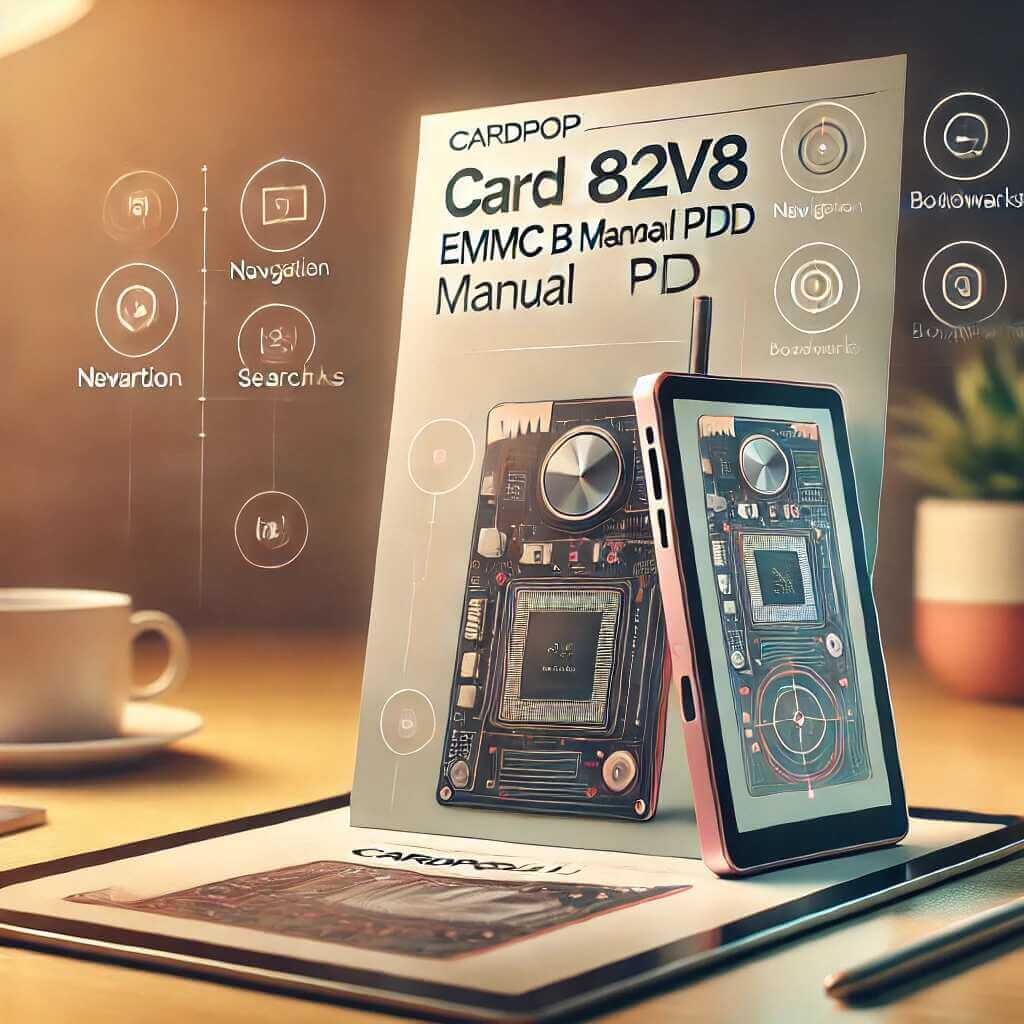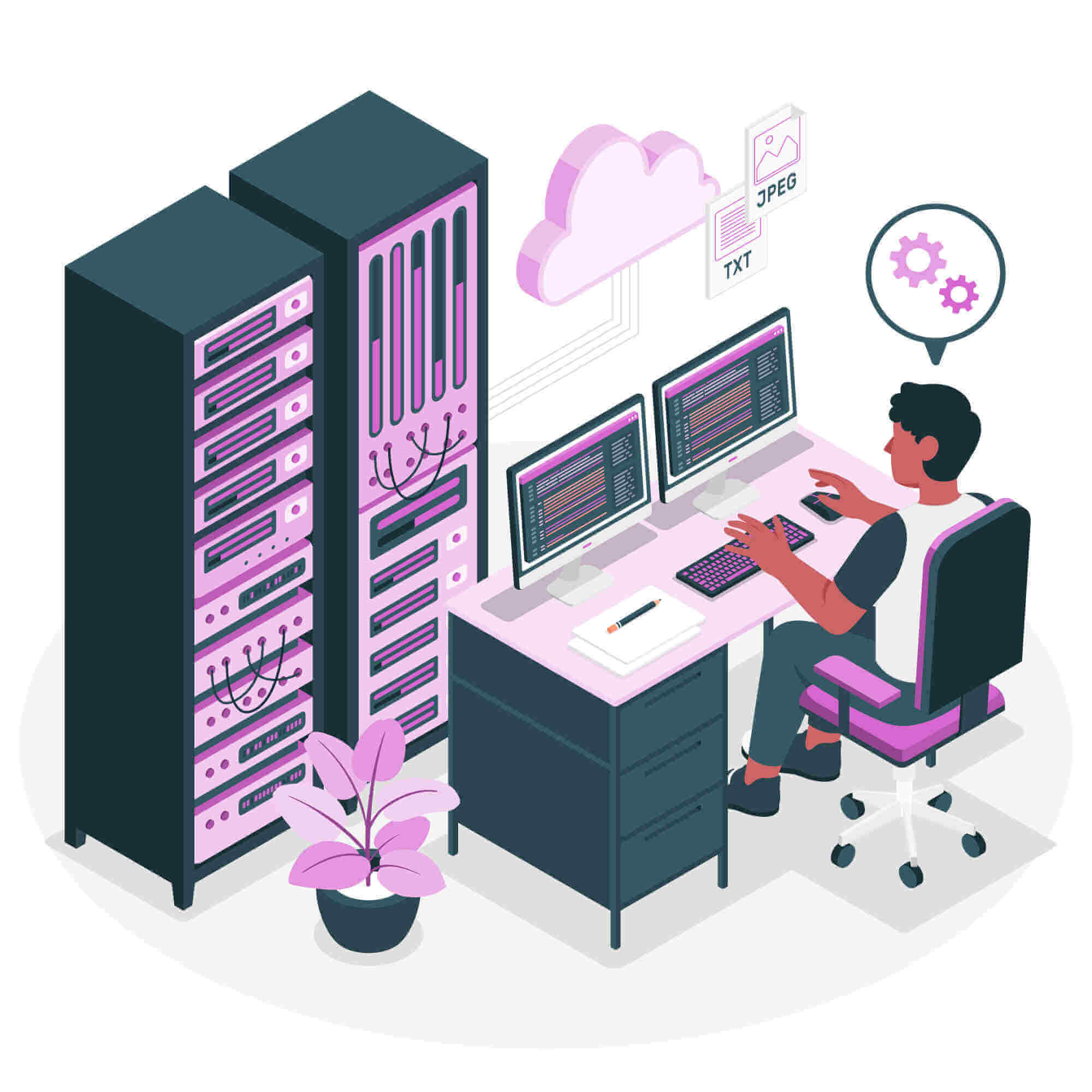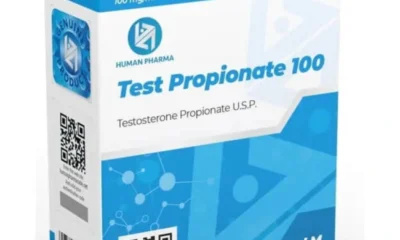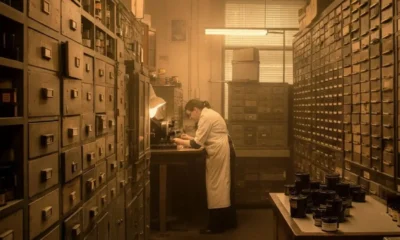Technology
How Blockchain Is Serving For A Healthier Future?
The energy and environmental sector is continuously expanding because of developments like electric vehicles and IoT-powered metering. Now it’s the turn of blockchain development, which has made enormous promises to establish smart contracts and cryptography-backed interoperable systems.

The potential of blockchain to address energy and environmental challenges is now largely underrated. The World Economic Forum published a paper a few years ago outlining more than 60 potential blockchain use cases in the industry to clear up any misconceptions.
We won’t make any assumptions or projections. We chose real-world examples from today’s article that demonstrate how DLT tools already affect the energy and environmental sectors, bringing about yet another technological revolution.
Decentralized Energy and Environment: Blockchain Use Cases In Industry
Electron – A Resource Exchange Infrastructure Enabled By Blockchain
There is a lot of potentials to cut carbon dioxide emissions with the rise of electric automobiles. According to Deloitte, nearly 20% of the energy consumed across 21 US states would come from solar and wind power by the year 2030.
However, this enormous supply of eco-friendly resources has not yet been fully utilized, which causes resource imbalances in electricity networks. Through the establishment of transparency and uniform resource tracking across the board, blockchain-based power could change the course of events. Energy experts may eventually be able to calculate dispersed energy resource margins more precisely depending on the location and grid constraints.
And Electron now performs this precise action. The business creates a digital system that uses this technology to organize resource information that is dispersed. The available assets, along with information on their provenance and ownership, will be visible to network participants.
In addition, Electron intends to create a permissioned resource repository and a decentralized peer-to-peer marketplace connecting grid operators.
AidCoin – Non-Profit Auditability Using This Solution
Donors generally come to help out of reluctance because nonprofits continue to pose a hazard of fakes and fabrication. Unfortunately, environmental NGOs are not an exception to this tendency, and blockchain may help by creating a distributed, transparent infrastructure, just as it does for social good.
In the future, donors might fund initiatives like installing solar panels in low-income areas, with the blockchain providing real-time updates on the project’s status.
Through AidChain, a network where energy charities may connect, the AidCoin firm addresses the “lack of trust” problem. NGOs can begin accepting donations in the form of blockchain-enabled digital assets after they have registered in the network.
Additionally, AidChain has its own exchange where assets are converted into AidCoin, an internal currency. Donors can then follow all AidCoin transaction flows, including those that took place off-chain.
UN – “Smart” Environmental Treaties
Although entering those looks reasonably simple, environmental agreements, in all their complexity, make it difficult to follow all the stated obligations. Because of this, when the UN Environment Program looked into the topic of environmental accords, the majority of them showed no improvement at all.
Together, the UN and UNICEF support blockchain projects utilizing smart contracts. Despite the development’s early stages, we can already make assumptions about the kind of future these well-known corporations hope to give us.
Environmental treaties can all be digitalized at some time, becoming self-executing smart contracts, therefore monitoring their development for rule compliance may not be required in the long term.
OpenLedger talks about the blockchain prospects in Abu Dhabi, one of the world’s most active innovation hubs.
IBM and Plastic Bank – Use Blockchain to Promote Recycling
The Los Angeles Times claimed that each year, countries produce more than 1.3 billion tonnes of waste, and they predicted that this amount would continue to rise until it reached 4 million tonnes within the next century. You will see the whole devastating image of how dirty the modern world is when you also take into account worldwide recycling rates.
Despite this, adoption campaigns for recycling go on and even broaden in reach. There are now a number of blockchain-based projects that encourage recycling using assets that can be used.
One of these initiatives is a partnership between PlasticBank and IBM that uses a rewards system to fight the pollution of the oceans with plastic debris. In a nutshell, this method of operation enables citizens to collect plastic in exchange for blockchain-enabled financial benefits (instead of disposing of it in water). Furthermore,
This acts as a validation mechanism, guaranteeing that each reward will be given out right away as the necessary conditions are met.
WePower – Increased Green Energy Aggregation for Low-Income Countries
But compared to rich nations, waste collection is frequently a more pressing problem in remote, low-income locations. For instance, only 10% of the waste produced by Africans is collected; the remainder is thrown someplace else, such as in streets, gutters, or rivers.
The effects are lethal and insidious, including terminal lung diseases. According to MailGuardian, 20,000 South Africans pass away as a result of air pollution each year.
But enough with the horrifying numbers; let’s look at what blockchain might have to offer. One may track emissions using a decentralized blockchain ledger that is secure, dependable, and tamper-proof. Additionally, since poor countries are the main sufferers of unsustainable waste management, they should be the focus of the main mitigating measures.
WePower and the Estonian government have partnered to establish “smart energy procurement” in underdeveloped countries as one such endeavor. WePower is an example of a trading platform that links buyers and suppliers of green energy.
With their own digital assets, producers can organize green energy auctions and sell all or part of their energy output. Buyers may verify each asset’s digital certificate of origin using the blockchain’s immutable record of transactions.
Veridium and IBM – Reduce Carbon Emissions
The final example in today’s article shows how blockchain can be used to establish carbon emission pricing.
IBM and Veridium established a partnership in December 2018. Veridium intends to use blockchain technology to transform carbon credits into fungible digital assets that can be traded on a network with blockchain support for both public and private transactions.
As a result, businesses will be able to use blockchain-based digital signatures to verify the legitimacy of carbon footprints. Todd Lemons, CEO of Veridium, claims that supply chain emission controls provided by blockchain would address global warming challenges with the ultimate goal of lowering environmental consequences.
To summarize: Sea Changes Are Coming!
The usage of chains will drastically reduce air pollution, in addition to bringing about more automated, transparent, and affordable operations. Green energy and the sharing economy will be fueled by technology. Despite all of these, blockchain will significantly affect the global economy.
The rapid energy shift that is the ultimate goal of the renewable energy industry will be accomplished with the digitization of blockchain. Could you have imagined something like that a few decades ago? Big things are about to happen.
Technology
Navigating the Cardpop L 82V8 EMMC B Manual PDF with Ease

Are you finding the Cardpop L 82V8 EMMC B manual PDF a tough nut to crack? You’re not alone. Many users face challenges when trying to troubleshoot and understand the intricacies of this device. But don’t worry, we’re here to make this process as easy as pie! In this guide, we’ll break down the steps to troubleshoot common issues and help you master the manual. By the end, you’ll feel more confident and ready to tackle any hiccup that comes your way.
Understanding the Cardpop L 82V8 EMMC
Before we dive into troubleshooting, let’s first get familiar with the Cardpop L 82V8 EMMC itself. This gadget is an embedded MultiMediaCard (eMMC), a storage device used in many different gadgets. It’s known for its compact size, reliability, and high-speed data transfer capabilities. The L 82V8 model is particularly popular for its versatility and efficient performance.
The Cardpop L 82V8’s capacity to process massive data quickly is one of its primary characteristics. This makes it an excellent choice for devices that require quick data access and retrieval. With its user-friendly interface, many find it a great addition to their gadgetry.
Getting Started with the Manual PDF
Now, let’s move on to the manual PDF. This document serves as the ultimate guide to your Cardpop L 82V8, offering detailed instructions and helpful tips. Yet, navigating through its pages can sometimes be daunting.
Most manuals, including this one, are organized into sections that cover different aspects of the device. These typically include installation instructions, operational guidelines, and troubleshooting tips.
Installation and Setup
One of the first sections you’ll encounter in the manual is the installation and setup guide. This part provides step-by-step instructions to get your Cardpop L 82V8 up and running. Proper installation is critical to ensure the device functions optimally, so let’s break it down.
Next, follow the manual’s instructions to physically install the Cardpop L 82V8. Typically, this involves safely inserting the eMMC into its designated slot and securing it with any required components.
Finally, configure your device as per the manual’s guidelines. This may include setting preferences, adjusting parameters, or installing supplementary software. Once everything is set, perform a quick test run to confirm everything is working as it should.
Common Operational Issues
Even with a flawless installation, issues can still arise. Let’s explore some common operational problems and how to address them.
Problem 1: Device Not Recognising EMMC
One frequent issue is when the host device fails to recognize the Cardpop L 82V8. Although this might be frustrating, it’s usually simple to fix. Start by checking the physical connection—ensure the eMMC is securely seated in its slot.
If the connection is fine, proceed to check the device settings. Verify that the necessary drivers and software are correctly installed and updated. Sometimes, a simple reboot can do wonders in resolving such issues.
Problem 2: Slow Data Transfer
Another common problem is slow data transfer rates. This can hinder productivity and lead to delays. To tackle this, first, make sure that the eMMC is compatible with your device’s specifications. Incompatible components can slow down performance significantly.
Next, review the settings on both the Cardpop L 82V8 and the host device. Tweaking specific parameters, such as data allocation or prioritization, can enhance speed. Additionally, clearing cache and temporary files regularly can help maintain optimal performance.
Problem 3: Unexpected Shutdowns
Unexpected shutdowns can be alarming, but they often have simple solutions. Start by checking the power supply to ensure that it’s stable and sufficient for the device. Fluctuations or interruptions in power can trigger shutdowns.
Additionally, inspect the device for overheating. Ensure that the ventilation is adequate and that the device isn’t placed in a confined space. The device’s lifetime may be increased and overheating avoided by routinely clearing away dust and debris.
Advanced Troubleshooting Techniques
When basic troubleshooting doesn’t solve the issue, it’s time to explore advanced techniques. These methods require a bit more technical knowledge but can effectively address more complex problems.
Firmware Updates
One advanced technique is updating the firmware. Firmware is the software that enables your device to function correctly. Check the manual for instructions on updating your firmware safely.
Diagnostic Tools
Another advanced approach involves using diagnostic tools. These tools can scan your device for errors and provide detailed reports. Use such tools cautiously, following the manual’s recommendations to avoid any unintended consequences.
Professional Support
If all else fails, consider seeking professional support. The manual may include contact information for customer service or authorized repair centers. Don’t hesitate to reach out for assistance when needed.
Maximizing Performance and Longevity
To get the most out of your Cardpop L 82V8, it’s important to adopt practices that maximize performance and longevity. Regular maintenance can prevent many common issues and extend the device’s lifespan.
One effective practice is routine cleaning. Regularly clean the device and its components to keep it in optimal condition.
Another key practice is monitoring performance metrics. Keep an eye on data transfer rates, power usage, and other relevant indicators. Address any deviations promptly to prevent potential problems.
Leveraging Online Resources
While the manual is a valuable resource, it’s not the only one available. Online resources can provide additional insights and support for troubleshooting your Cardpop L 82V8.
Forums and online communities are excellent places to connect with other users. They can offer advice, share experiences, and even provide solutions to specific problems you encounter.
Additionally, video tutorials can be a great complement to the manual. Visual guides can simplify complex concepts and demonstrate troubleshooting techniques step-by-step.
Conclusion
In conclusion, the Cardpop L 82V8 EMMC B manual PDF is an essential tool for troubleshooting and mastering this device. By understanding its layout, following installation guidelines, and addressing common issues, you can enhance your experience and optimize performance.
By implementing these strategies, you’ll become proficient in handling the Cardpop L 82V8 and ensure it serves you well. Feel free to explore additional resources and keep learning to make the most of your device.
Technology
How to Program EN2827 Remote Easily?

Welcome to the world of convenience and control, where a single device can simplify your life. If you’ve just got your hands on an EN2827 remote, you’re in for a treat. This guide will show you how to program your EN2827 remote easily, so you can start enjoying seamless interaction with your devices. Whether you’re a tech novice or a savvy gadget guru, our step-by-step instructions will ensure you’re up and running in no time.
This blog will guide you through the entire setup process, offering helpful tips, common troubleshooting solutions, and insights into the features that make the EN2827 remote a must-have for any modern household.
Understanding Your EN2827 Remote
The EN2827 remote is a versatile tool designed to manage multiple devices from a single point of control. It’s compact and user-friendly, making it a popular choice for tech enthusiasts. Before we start programming, it’s essential to familiarise yourself with the buttons and functions, allowing you to fully utilise its features.
The remote typically comes with a user manual. This guide provides a detailed overview of each button’s purpose, helping you understand its full potential. Knowing where everything is will make the programming process quicker and easier.
Additionally, understanding the remote’s battery power requirements is crucial. The EN2827 usually requires AA or AAA batteries, which need to be inserted correctly to function. Ensuring your remote has fresh batteries will prevent interruptions during programming.
Preparing for Programming
Before jumping into programming, you should gather a few essentials. Besides your EN2827 remote, you will need the device you wish to control and a clear understanding of its model or product code. This information is often found in the device’s manual or on its back panel.
Setting up in a well-lit area can help, especially if you’re new to programming remotes. A comfortable space will make it easier to refer to instructions, input codes, and troubleshoot any issues that arise.
Step-by-Step Programming Instructions
Programming the EN2827 remote involves inputting specific codes that correspond to the devices you wish to control. Start by switching on the device you plan to pair with the remote. This could be a TV, stereo system, or any compatible gadget in your home.
Next, press the ‘Setup’ button on the EN2827 until the indicator light remains steady. This indicates that the remote is ready to receive input codes. Input the code for your device using the number pad on the remote. These codes are typically available in the remote’s manual or online.
Exploring Advanced Features
Once you’ve programmed your EN2827 remote, it’s time to explore its advanced features. Most remotes offer additional functions that enhance user experience, such as volume control, mute, and even the ability to switch inputs between devices.
Some EN2827 remotes also support learning functions. This means they can learn commands from other remotes, making them even more versatile. Consult your manual for instructions on how to activate these features and expand your remote’s capabilities.
Experimenting with these functions can unlock new possibilities for your home entertainment system. The more you explore, the more you can personalise your viewing and listening experiences.
Keeping Your Remote Updated
Like any tech device, your EN2827 remote may need updates to maintain optimal performance. These updates can include new device codes or improvements to existing functions. Staying informed about updates will ensure your remote continues to serve you well.
They might offer downloadable files or instructions on how to apply these updates through a computer or mobile device.
Maximising Battery Life
A common concern with remotes is battery life. To extend the life of your EN2827 remote’s batteries, consider using high-quality alkaline or rechargeable batteries. These types tend to last longer and offer consistent performance.
Turning off the remote when it’s not in use can also save battery power. Some remotes have an automatic shut-off feature, but if yours doesn’t, be mindful to switch it off manually after use.
Integrating With Other Smart Devices
The EN2827 remote can often be integrated with other smart devices in your home, offering a seamless experience. Many modern remotes support smart home protocols, allowing them to interact with smart TVs, sound systems, and even lighting controls.
To set this up, you’ll first need to check your device’s compatibility with smart home integration. Once confirmed, follow the manufacturer’s instructions to link your remote to other devices, creating a connected ecosystem in your home.
Maintaining Your EN2827 Remote
Regular maintenance of your EN2827 remote can ensure its longevity and performance. Cleaning the remote with a soft, dry cloth can prevent dust and dirt buildup that may affect button responsiveness.
If you notice any, clean it carefully with a cotton swab dipped in vinegar, then dry thoroughly before replacing the batteries.
Upgrading Your Remote
Technology is always advancing, and upgrading your remote can offer new features and improved functionality. If you find that your EN2827 no longer meets your needs, research newer models that offer the enhancements you desire.
Upgraded remotes may offer better compatibility with newer devices, improved range, and additional smart features. Consider your needs and budget when selecting a new remote.
FAQs About Programming the EN2827 Remote
Programming a remote can raise many questions. Here are some frequently asked questions to help you troubleshoot and make the most of your EN2827 remote.
Questions like “What if my device doesn’t have a code?” or “Can I program the remote to control more than one device?” are common. Consult your manual or online resources for answers.
Customer Support and Resources
If you still face difficulties programming your EN2827 remote, customer support can be a valuable resource. The manufacturer’s website often provides manuals, FAQs, and contact information for technical support.
Online forums and communities can also be helpful. Engaging with others who have similar devices can offer insights and solutions you might not find elsewhere.
Final Thoughts on Programming Your EN2827 Remote
Programming your EN2827 remote doesn’t have to be a daunting task. With the right information and a little patience, you can unlock a world of convenience and control over your devices.
Remember, the key to success is understanding your remote, following the programming steps carefully, and not hesitating to seek help if needed. With this guide, you’re well on your way to mastering your EN2827 remote.
Technology
Common VPS Hosting Configuration Mistakes

Venturing into the sector of VPS web hosting can feel like exploring uncharted territory, in particular with the numerous intricacies involved. While Virtual Private Server (VPS) web hosting gives super flexibility and control, stumbling upon a few pitfalls at some stage in setup and configuration is predicted. Missteps can lead to compromised performance, security risks, and downtime—issues every VPS user would prefer to avoid. This blog post aims to illuminate some of the most common VPS hosting configuration mistakes and guide you on avoiding them.
The Importance of Proper Configuration
Proper configuration is paramount to unlocking the full potential of your VPS web hosting. Misconfigurations can impede website performance, disrupt user enjoyment, and expose your machine to safety vulnerabilities. Imagine putting in place your VPS only to discover it lags due to incorrect resource allocation or is vulnerable to attacks due to inadequate security features. Investing the necessary time and effort to ensure your VPS is configured efficaciously from the beginning is vital.
When you choose to Buy VPS hosting, taking advantage of the setup options provided to optimize performance and maintain robust security is essential. Being proactive in a configuration not only enhances the efficiency of your server but also safeguards it against potential risks.
Navigating those complexities requires expertise in capacity pitfalls and proactive measures to counteract them. You could save time, effort, and sources by figuring out commonplace VPS hosting configuration mistakes, ensuring your server operates easily and securely.
Choosing the Wrong Operating System
One frequent blunder in VPS hosting is deciding on the incorrect running system (OS). Your preference for OS can substantially affect your server’s performance and compatibility with specific programs. For example, Linux-based systems are commonly extra price-effective and flexible for open-supply programs, while Windows-based total structures are appropriate for applications requiring a Windows environment.
Selecting an irrelevant OS may also unnecessarily result in compatibility issues or growth prices. Therefore, assessing your requirements and comparing which OS will best meet your wishes is essential, ensuring easy operation and compatibility with the software program you intend to apply.
Neglecting Regular Updates
Another common mistake is failing to update your VPS regularly. Updates often encompass essential safety patches that guard your server from vulnerabilities. Neglecting those updates can leave your VPS exposed to cyber threats.
Regular updates ensure your server operates efficiently and remains secure. Set a schedule to check for and apply updates consistently. Automating this process can also help you maintain the latest security patches and improvements without much effort.
Inadequate Resource Allocation
Incorrectly allocating sources is a mistake that could critically avoid your VPS’s overall performance. Over-allocating sources can result in unnecessary charges, whilst underneath-allocating can cause your server to lag or crash underneath heavy masses.
Assess your needs and adjust CPU, RAM, and storage allocations accordingly to avoid this. Start with a conservative approach and upgrade as your requirements grow. Many VPS providers, like 1Gbits, offer scalable plans that allow you to adjust resources as needed.
Lacking Proper Security Measures
Security is paramount in VPS hosting, yet it’s frequently disregarded. A lack of proper security features can expose your server to unauthorized get admission to, data breaches, and other cyber threats. Common oversights include vulnerable passwords, missing firewalls, and the absence of encryption.
Implementing robust security practices is essential. To protect your server, use sturdy, unique passwords, allow firewalls, and take into account additional security gear. Also, monitor logs for suspicious interest regularly and conduct periodic security audits to ensure ongoing protection.
Insufficient Backup Strategies
Not having a comprehensive backup method is a configuration mistake that may result in devastating facts loss. Many customers best recognize the importance of backups after a catastrophic occasion.
To mitigate danger, set up a dependable backup machine. Schedule ordinary backups and ensure they are saved securely. Test your backups periodically to confirm they can be restored effectively when needed. This proactive method can prevent potential headaches in the future.
Ignoring Monitoring and Alerts
Failing to screen your VPS and installation alerts corresponds to flying blind. Monitoring is vital for retaining performance and uptime, whilst indicators can notify you of troubles before they expand.
Invest in monitoring tools that track server health, resource utilization, and overall performance metrics. Configure alerts for essential thresholds, consisting of excessive CPU usage or low disk area, so you can promptly cope with troubles and hold ideal server overall performance.
Overlooking Performance Optimization
Neglecting performance optimization is a common oversight in VPS hosting. With optimization, your server may perform at its full potential, leading to slow load times and a poor user experience.
Implement performance optimization techniques to enhance your VPS’s efficiency. This might include caching, optimizing databases, and compressing files. Regularly reviewing and fine-tuning these optimizations ensures your server runs smoothly and efficiently.
Misconfiguring DNS Settings
Misconfigured DNS settings can result in downtime, sluggish reaction times, or inaccessible websites. Proper DNS configuration is crucial for successfully directing visitors to your server.
Ensure your DNS information, which includes A and MX, is configured correctly and in the shape your server’s IP deals with. Verify those settings with your DNS company to save you problems and improve your site’s accessibility and performance.
Failing to Scale Resources
A common mistake in VPS website hosting is failing to scale sources as your needs develop. Scaling is essential for maintaining performance as your site or application profits visitors and requires more significant resources.
Work with a VPS provider that offers bendy scaling alternatives so you can adjust sources as wished. This guarantees your server can accommodate hundreds of improved ones without sacrificing performance or reliability.
Conclusion
Understanding and fending off these not-unusual VPS hosting configuration mistakes can significantly decorate your server’s overall performance, security, and reliability. By choosing the proper operating machine, imposing robust security features, and proactively tracking and optimizing your server, you can free up the overall capability of VPS web hosting.
For those seeking to Buy a VPS hosting provider with scalable solutions and comprehensive support, consider 1Gbits. Their services meet the diverse needs of VPS users and ensure a seamless hosting experience.
By taking a proactive approach and heading off those pitfalls, VPS users can expectantly harness the electricity of digital non-public servers to beautify their online presence and reap their dreams.
-

 Travel3 weeks ago
Travel3 weeks ago10 Things to Do in Punta Mita
-

 Real Estate3 weeks ago
Real Estate3 weeks agoFind the Best Real Estate Agents Main Line
-

 Real Estate3 weeks ago
Real Estate3 weeks agoHow to Be the Best Real Estate Agent Murfreesboro
-

 Travel1 month ago
Travel1 month agoBest Things to Do in New York City – Ultimate Travel Guide
-

 Health4 weeks ago
Health4 weeks agoGuide to Buying Testosterone Propionate Safely and Effectively
-

 Travel2 weeks ago
Travel2 weeks agoSave on Campervan Rentals with a roadsurfer Gutscheincode
-

 Real Estate1 month ago
Real Estate1 month agoTop Tips for Real Estate Agents in San Antonio
-

 Photography1 month ago
Photography1 month agoThe Ultimate Guide to 35mm Film Developing Lab






